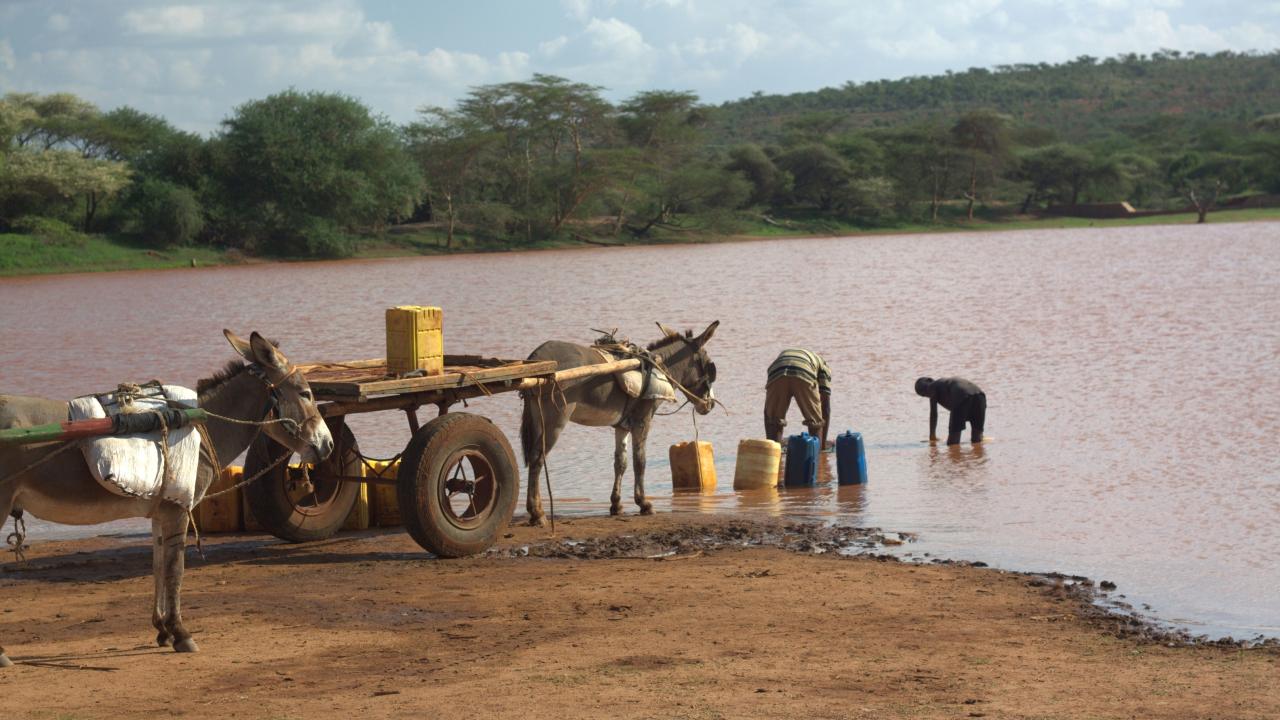
Decades of research – much of it supported by the Feed the Future Innovation Lab for Assets and Market Access’s Index Insurance Innovation Initiative (I4) - have developed a strong evidence base of the positive welfare impacts of index insurance on vulnerable populations of smallholder agriculturalists. When insured, vulnerable agriculturalists are less likely to resort to costly coping strategies – such as asset sales, meal reduction, or reliance on food aid, and are more likely to make productive investments.
 Agricultural index insurance is a promising tool to manage some of these risks, but there is still much to learn about how to responsibly develop and scale such products for maximum development impact. It was with this in mind that the AMA Innovation Lab, in partnership with the International Labour Organization’s (ILO) Impact Insurance Facility, created the Global Action Network (GAN) to advance agricultural index insurance.
Agricultural index insurance is a promising tool to manage some of these risks, but there is still much to learn about how to responsibly develop and scale such products for maximum development impact. It was with this in mind that the AMA Innovation Lab, in partnership with the International Labour Organization’s (ILO) Impact Insurance Facility, created the Global Action Network (GAN) to advance agricultural index insurance.
The GAN was launched with the hopes that drawing together key stakeholders and change agents could identify important gaps in knowledge or capabilities, and then innovate solutions to these problems and create resources to address them. Through regular stakeholder engagement with the network over several years, by 2017 it was clear that the lack of quality standards for index-based insurance was a fundamental concern to address.
The need for quality is even more urgent, considering the recent push to expand insurance coverage for households vulnerable to the impacts of climate change, especially through initiatives such as the G7 InsuResilience initiative. Low-quality products will sour vulnerable agriculturalists on the idea of insurance and prevent the long-term achievement of true risk management. Allowing poor insurance onto markets can severely undercut the future development of a market for good insurance
AMA Innovation Lab researchers have developed a Minimum Quality Standard (MQS) testing tool that allows index insurance industry regulators, donor organizations and implementers all to test whether an index insurance product, at a minimum, does no harm to potential clients. With this tool we now have objective, quantitative metrics that can assess quality of index insurance products and to compare products to one another.
Without a certification for quality, agriculturalist households have no way to tell the difference between an index insurance contract that is likely to pay out when it should from one that isn’t. Without one, it can take years before a client has the opportunity of a catastrophe to tell the difference, and by then it’s too late. Because it is more expensive to make high quality insurance products, and because it can take years for consumers to be able to tell that the insurance contract is low quality, there is no inherent incentive for insurers to create high-quality contracts.
Standard statistical tools and historical data from sources used to build index insurance contracts can be used to measure the two factors that contribute to this minimum quality: the likelihood that the insurance will fail to pay out in the case of a loss, and
whether that failure to pay out happens more frequently when the losses are larger and circumstances even more dire for the farmer.
Through these partnerships and ongoing research and stakeholder engagement, the AMA Innovation Lab is in a unique position to identify critical characteristics for success, safety and efficiency for agricultural index insurance interventions.
Global Action Network Key Products
Guidelines for Consumer Education Interventions
Index-based insurance is an innovative tool that can help smallholder farmers manage risks related to weather conditions. It offers a big opportunity to both farmers and providers but its complexity can lead to poorly-understood products that may do more harm than good. These guidelines for index insurance education supports the industry to raise awareness about index insurance and build trust in quality products.
Bundling to Make Agricultural Insurance Work
Bundling insurance offers the opportunity to air an insurance product with a value chain component (output or input) that is necessary for the farmer. This guide is a resource for creating a dynamic path to improving farming practices, access to quality inputs and to markets. By bundling insurance with other financial and non-financial services, practitioners can develop a customised suite of products, services and delivery modes that offer substantial and tangible client value.
“3-D” Assessment of Client Value
This tool provides a multi-dimensional measure of an insurance contract’s total value for existing or potential clients. It is tailored for use by insurers, consultants, technical assistance partners, donors and researchers, and can be used to evaluate an existing product or one yet to reach the market.
